Composite decking ideas to add style and structure to your outdoor space
Give your garden added value and good looks by using these clever boards

As the days grow warmer and longer, we start to spend more and more time in our gardens. There are a myriad of ways to make your outdoor space work for you, and composite decking ideas has to be one of the most versatile.
Decking ideas add so much flexibility to your garden. They work equally well integrated into lawns or as standalone terraces and patios. Therefore, whether you're looking to create a new dining area, entertaining space or practical pathway, decking steps up to the challenge. Plus, some strategically placed boards can add value, as well as style, to your home. Always a welcome bonus.
Decking of any sort is a great choice in terms of garden ideas, but composite decking ideas, specifically, are worth exploring. 'It’s an ideal choice for homeowners with a busy lifestyle, as it requires very little maintenance,' says Nick Whiley, Project Director, Trekker Decking. 'With its clean, straight lines wood composite planks offer a timeless look and will enhance natural beauty across both contemporary and classic exteriors.'
It's first well worth understanding exactly what we mean when we talk about composite boards. 'Composite decking, also sometimes referred to as WPC decking, is made up of a combination of plastic and wood fibres that, when combined, create strong and durable decking boards,' explains Lee Cavalier, Decking Product Manager, Dura Composites.
'Good quality composite decking combines recycled wood and plastic elements for a more sustainable choice, and results in a strong, durable and authentic looking alternative to traditional wood that’s much lower maintenance and easier to care for.'
Composite decking ideas
'Decking is a great way to make the most of your outdoor space,' says Tony Kersey, Buying Manager Builders, Hardware & Fixings, Homebase. 'Laying and looking after decking isn’t as difficult as you’d think, although there are a few things to consider before beginning your garden makeover, like how durable you’d like your decking to be and how you’re planning on using it.'
So, whatever outdoor space you've got, it's time to explore what composite decking ideas could work for you.
Get the Ideal Home Newsletter
Sign up to our newsletter for style and decor inspiration, house makeovers, project advice and more.
1. Use two colours for style and safety
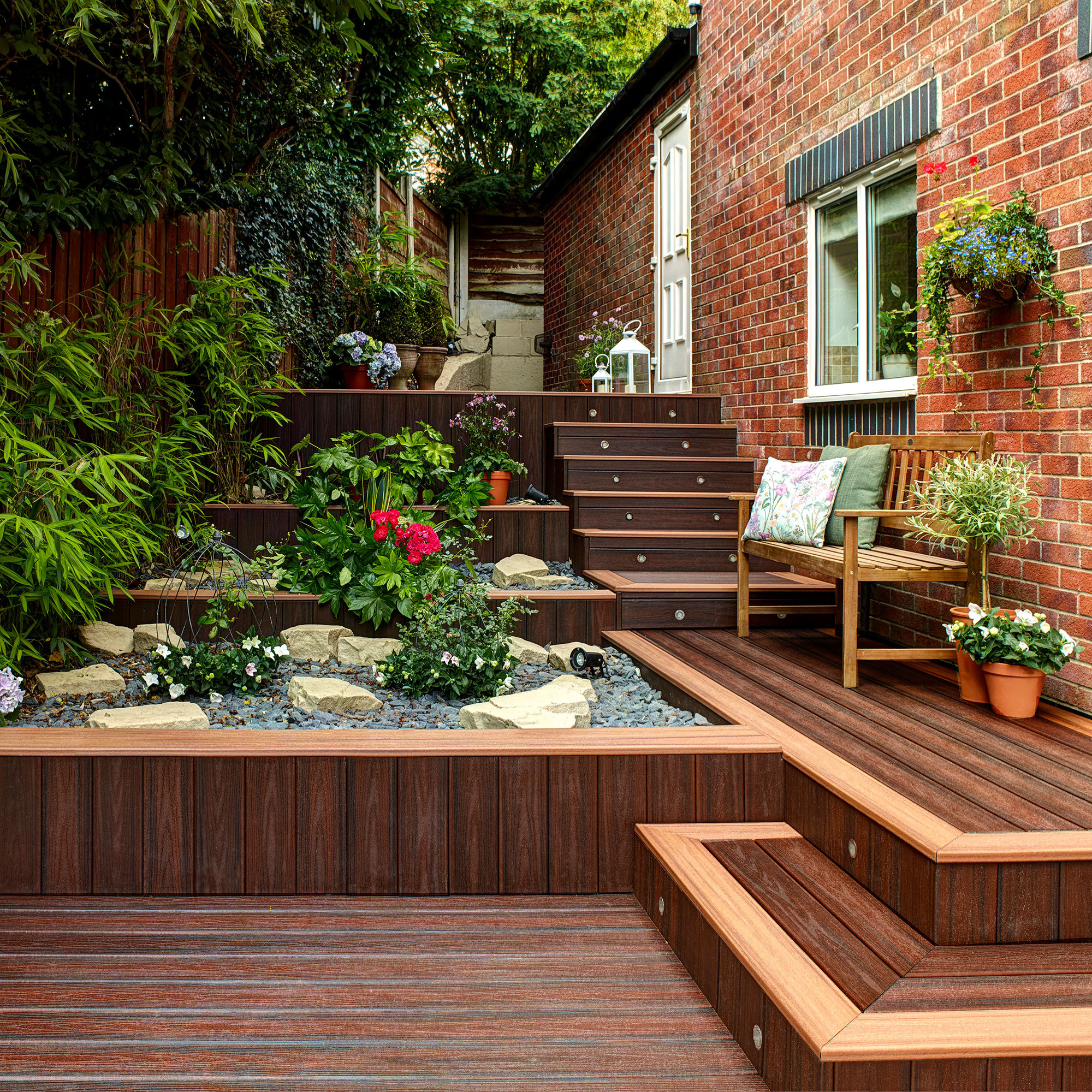
One of the many benefits of composite decking is the vast array of colours and finishes available. Make the most of this flexibility by using more than one shade in your outdoor space. One way of doing this is to use a lighter colour of the borders and edges of steps.
As well as adding interest, this neatly zones areas. In terms of the steps this form of composite decking ideas also makes things safer come evenings as the levels will be more visible.
2. Paint your pergola to match the boards
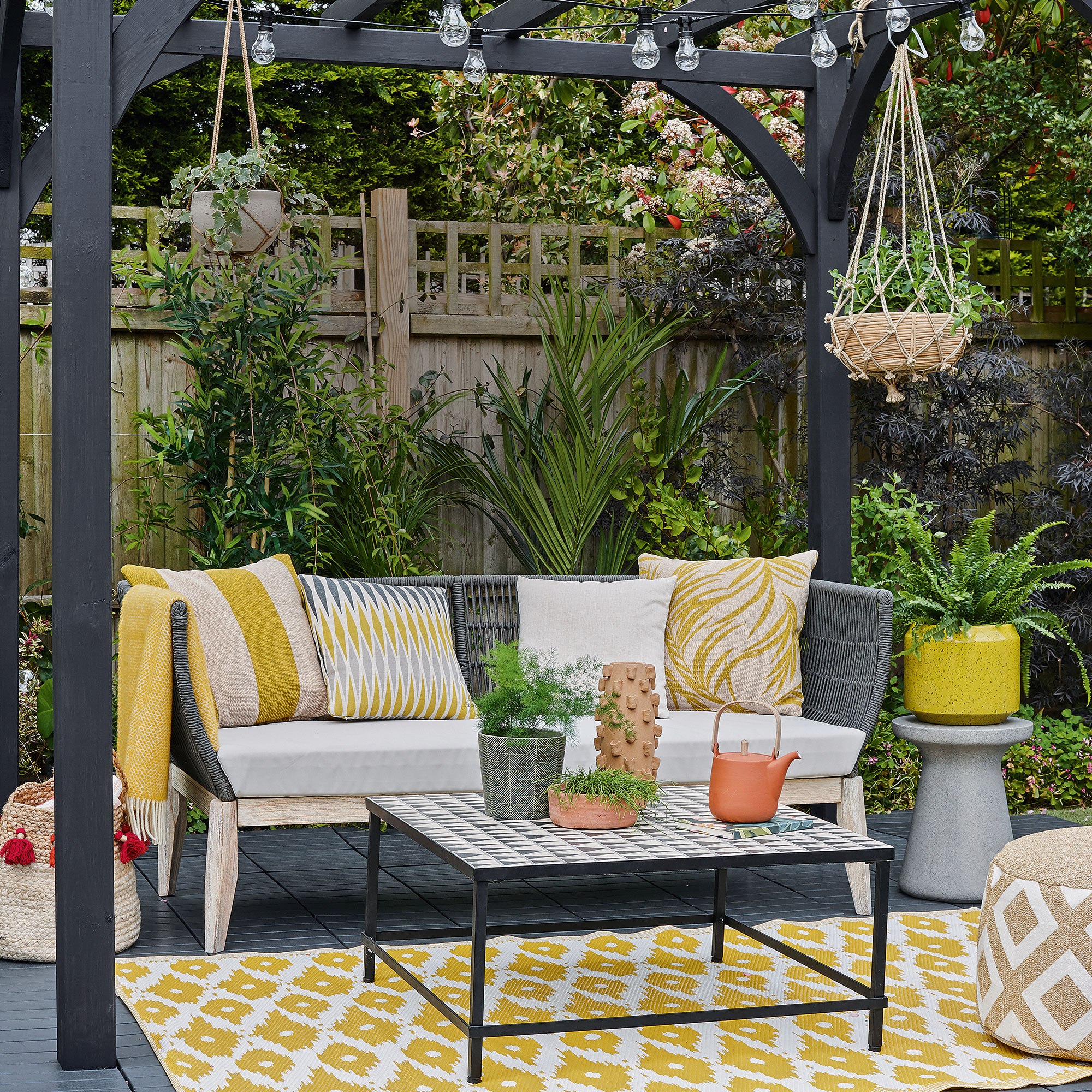
Create an outdoor room based around your composite decking. Use outdoor paint to co-ordinate your pergola or trellis with the flooring below. This will delineate the area, making it feel enclosed and cohesive. While you will need to repaint your pergola over time, this won't be the case with the flooring.
‘Composite decking is incredibly low maintenance, they will not rot, split, swell, twist or fade like a timber deck,’ points out Karl Harrison, landscaper and Trex Composite Decking expert. 'They do not require annual painting, staining or stealing and won’t splinter easily either. They even have the natural look of timber and all this is possible without having to fell a single tree, making them a highly sustainable decking option.'
3 Use two styles for interest
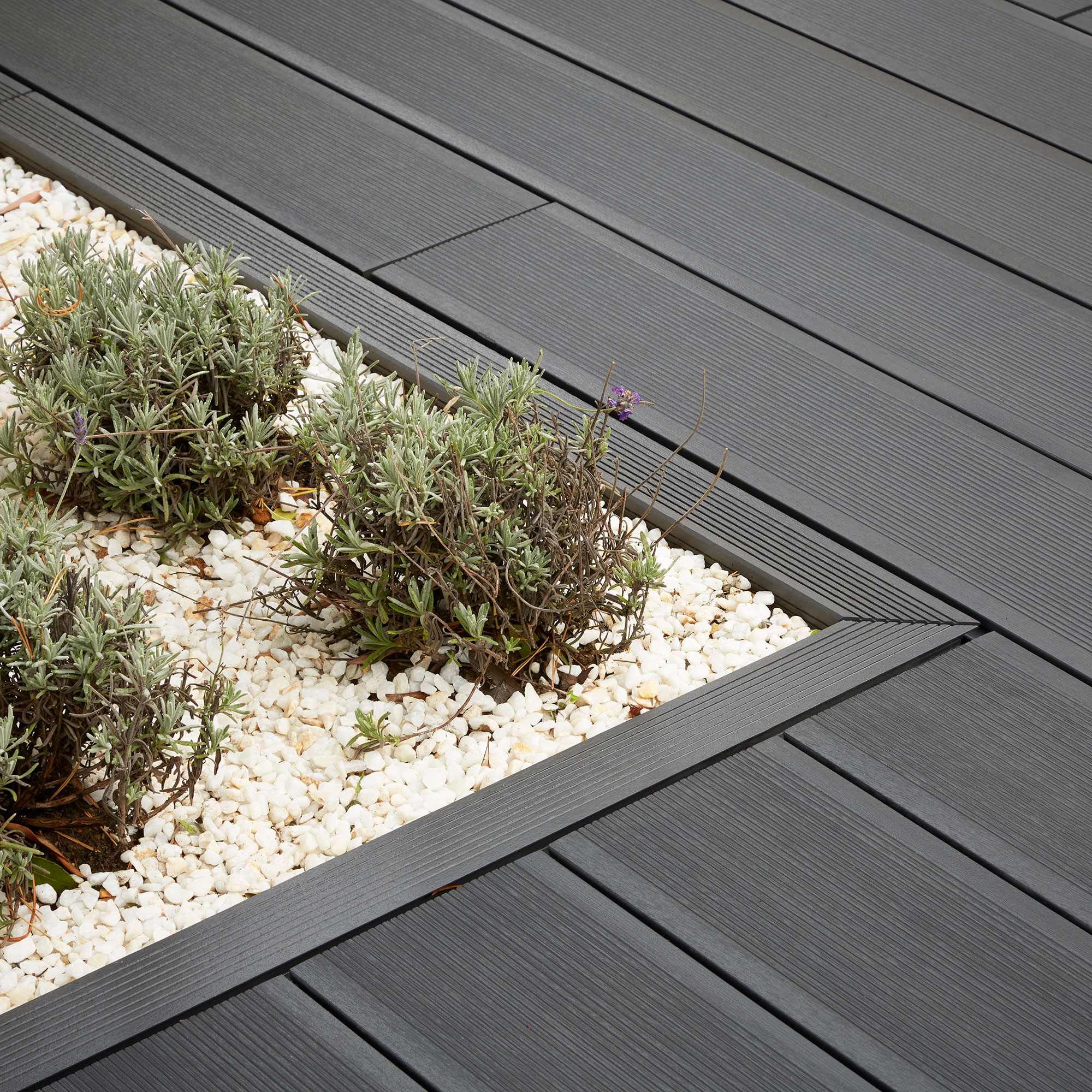
Make the most of the variety available with composite decking ideas by using more than one style in an area. Choose a thinner board design to create an elegant boarder to your terrace or pathway.
Whatever style or design you choose, rest easy knowing the good looks will last. 'Composite decking requires very little maintenance apart from basic cleaning,' advises Nick Whiley, Project Director, Trekker Global. 'Composite boards look, feel and are installed in the same way as natural wood, but they will not rot, splinter, warp or host algae growth. They are also extremely fade and stain resistant, making them essentially maintenance free, requiring no sanding, staining or painting.'
4. Create level outdoor space

It's fairly common to have a lawn and a house which don't exactly match up on levels, so use composite decking ideas to fix this problem. You can even lay these over existing paving to modernise the area and level things even further.
'Adding decking to your garden can be a great way to create the perfect outdoor space for summer dining,' says Chris Moorhouse, Category Director for Timber, Building, Decor and Garden, Wickes. 'On the whole, laying decking over old patios is completely fine, however the surface needs to be flat so if your slabs are in really bad shape we would advise relaying these first to reduce the risk of your new decking sinking over time.'
5. Integrate a retro conversation pit
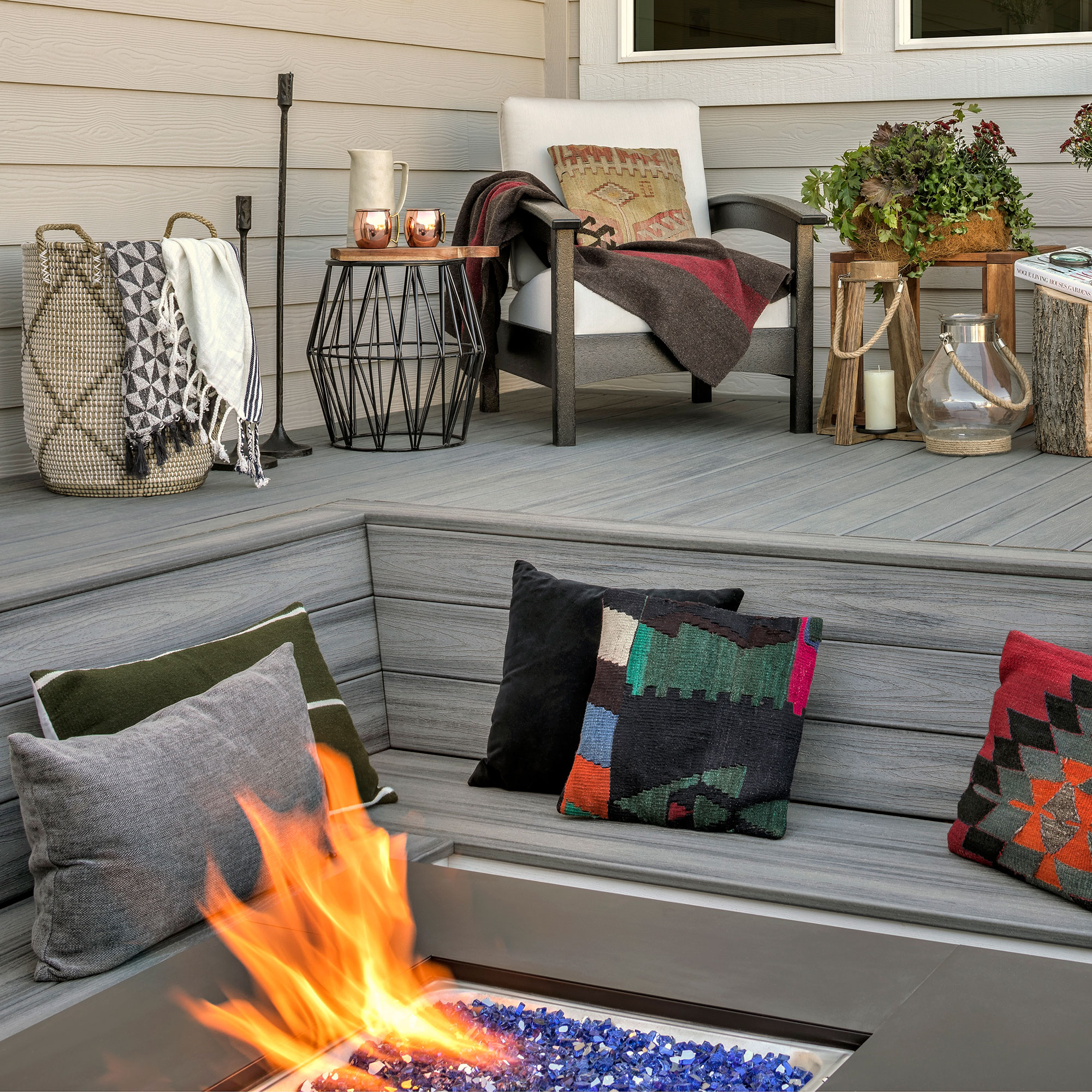
Look to the Seventies for a quirky addition to your outdoor space. If you're considering working in a firepit, then why not go one step further and build in a full blown conversation pit? You'll have seating and heating together in this cool zone.
'Like many other outdoor surfaces, such as concrete, asphalt, beach sand, timber decking, composite decking can get hot due to weather and sun exposure,' notes Karl Harrison. 'On such days, care needs to be taken to make sure skin does not have extended contact with the surface of the deck, especially with young children and those with special needs. Please note also that the darker the colour, the hotter the deck will feel. For hotter climates, consumers should consider choosing a lighter colour.'
6. Opt for a tile effect
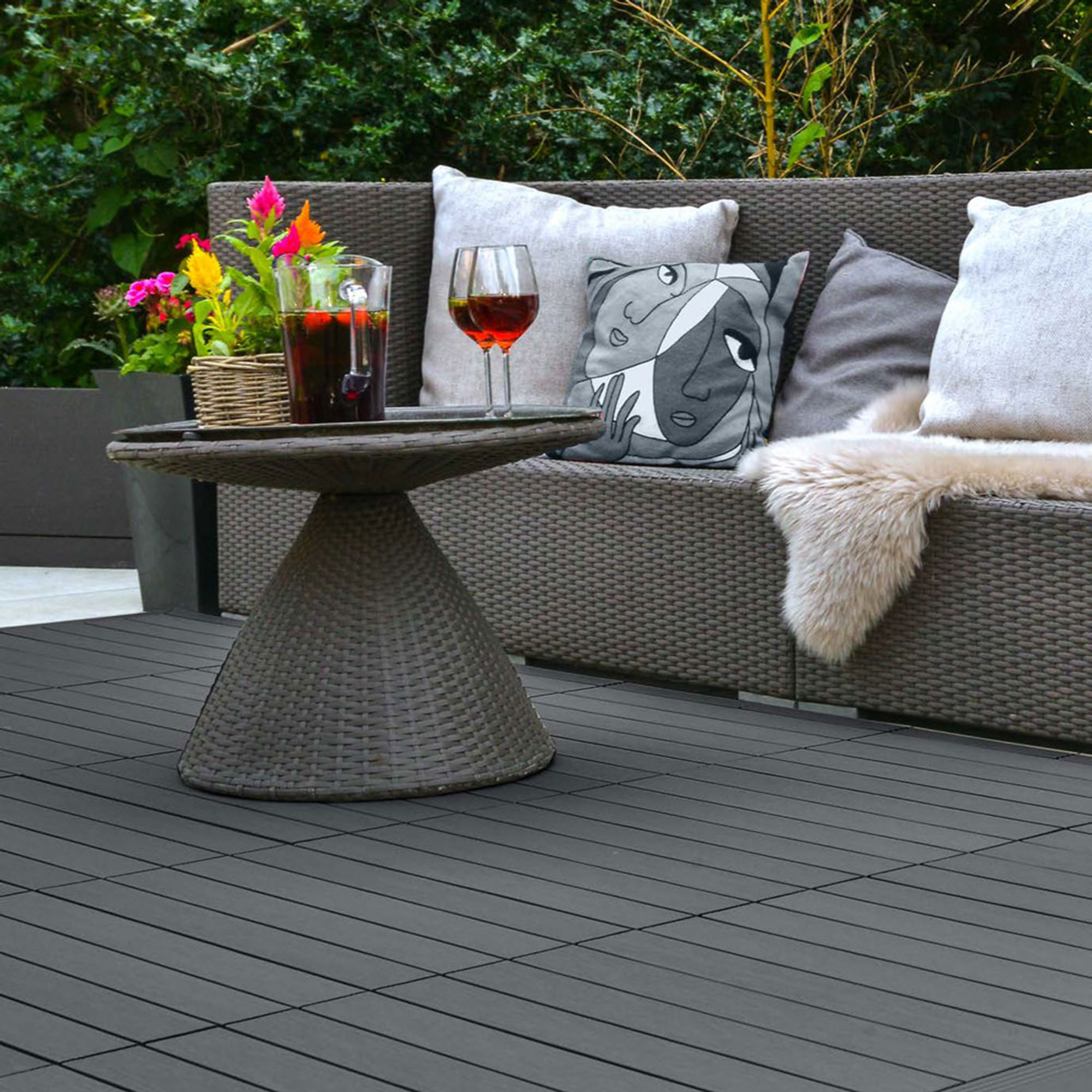
'Composite tiles are another alternative to traditional boards,' advises Lee from Dura Composites. 'These easy-to-lay interlocking tiles can be installed without any specialist tools or skills, and are ideal for smaller gardens, as well as balconies and terraces.' Just make sure that you know the correct way to lay decking boards before starting.
'Decking tiles are also handy for renters as they can easily be moved or removed when the time comes to move on.'
7. Choose a contrasting colourway
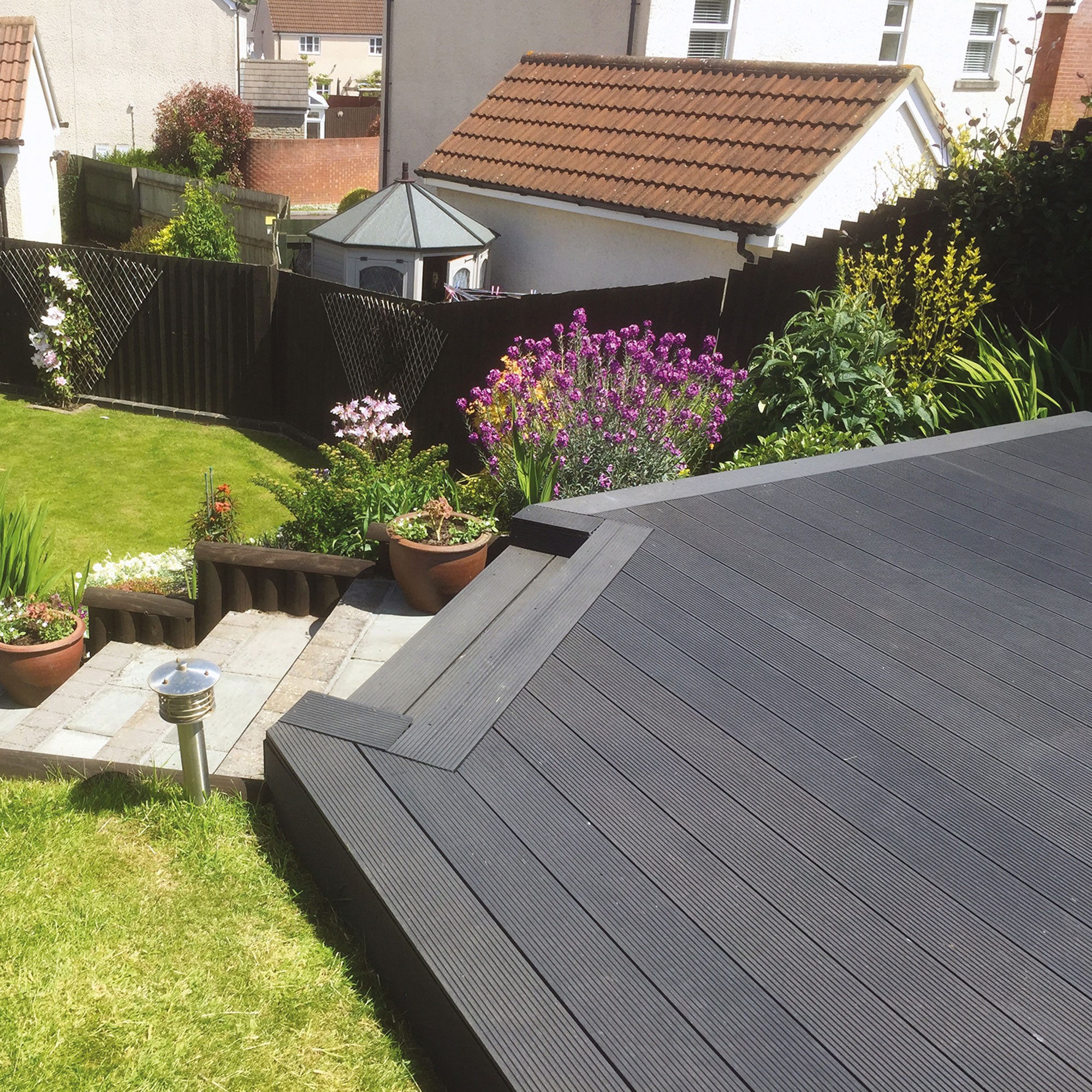
Make a statement with your decking. Select a colour with contrasts dramatically with other garden elements. If you have a fairly classic space, perhaps with stone steps or path, green lawns and natural wooden garden fence ideas, then dark boards will add impact and interest.
8. Utilise squares of composite woods
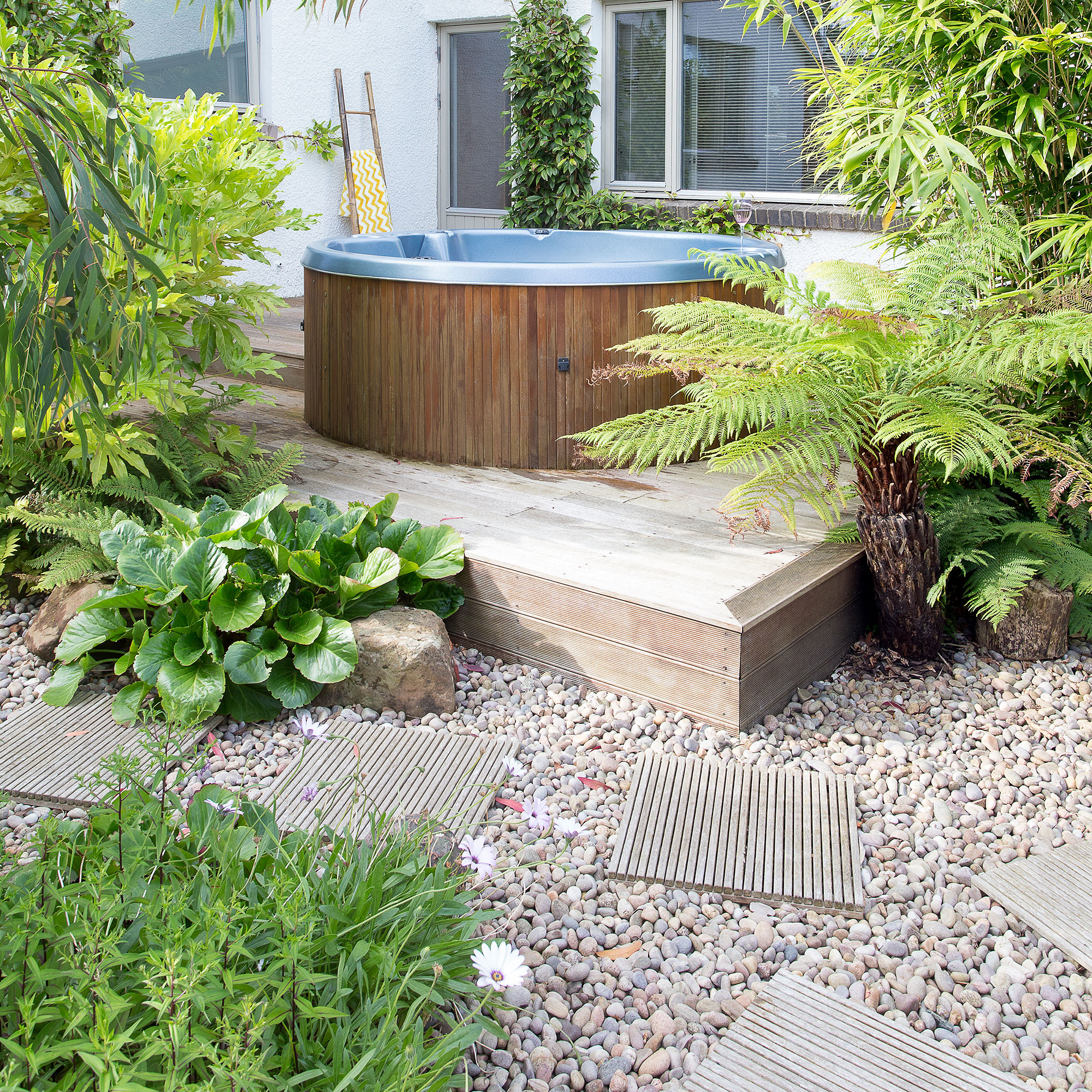
Composite decking ideas can be stripped back to their elements for the utmost flexibility. Individual squares of decking make for perfect stepping stones to create a new relaxed pathway over grass or gravel areas.
9. Create zones with levels
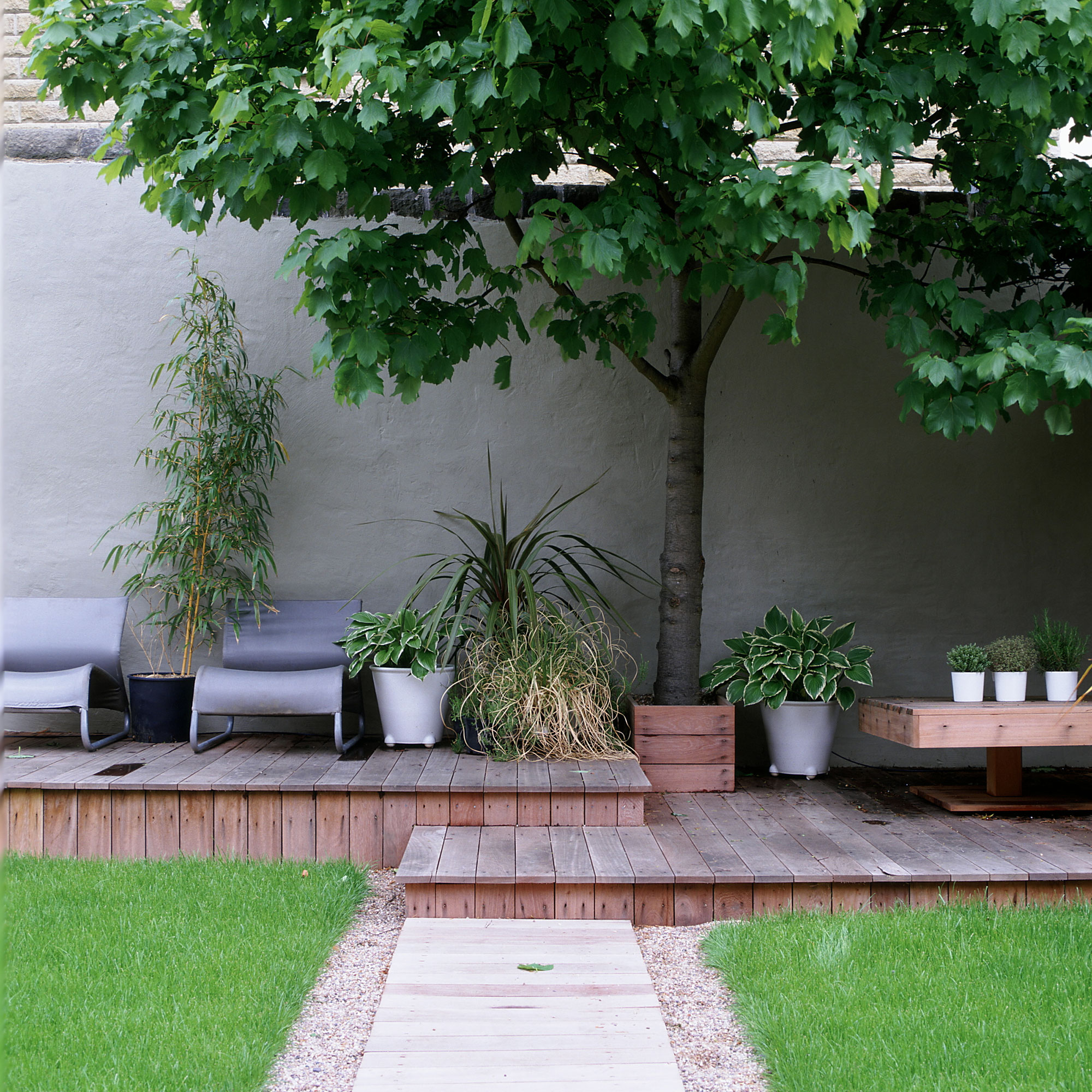
Garden zones are a popular and easy way of making the most of your space. Use decking to add a few tiers of entertaining or seating areas. This will add interest to the garden, as well as creating individual areas for different situations or groups of people to gather.
10. Add an elongating pathway
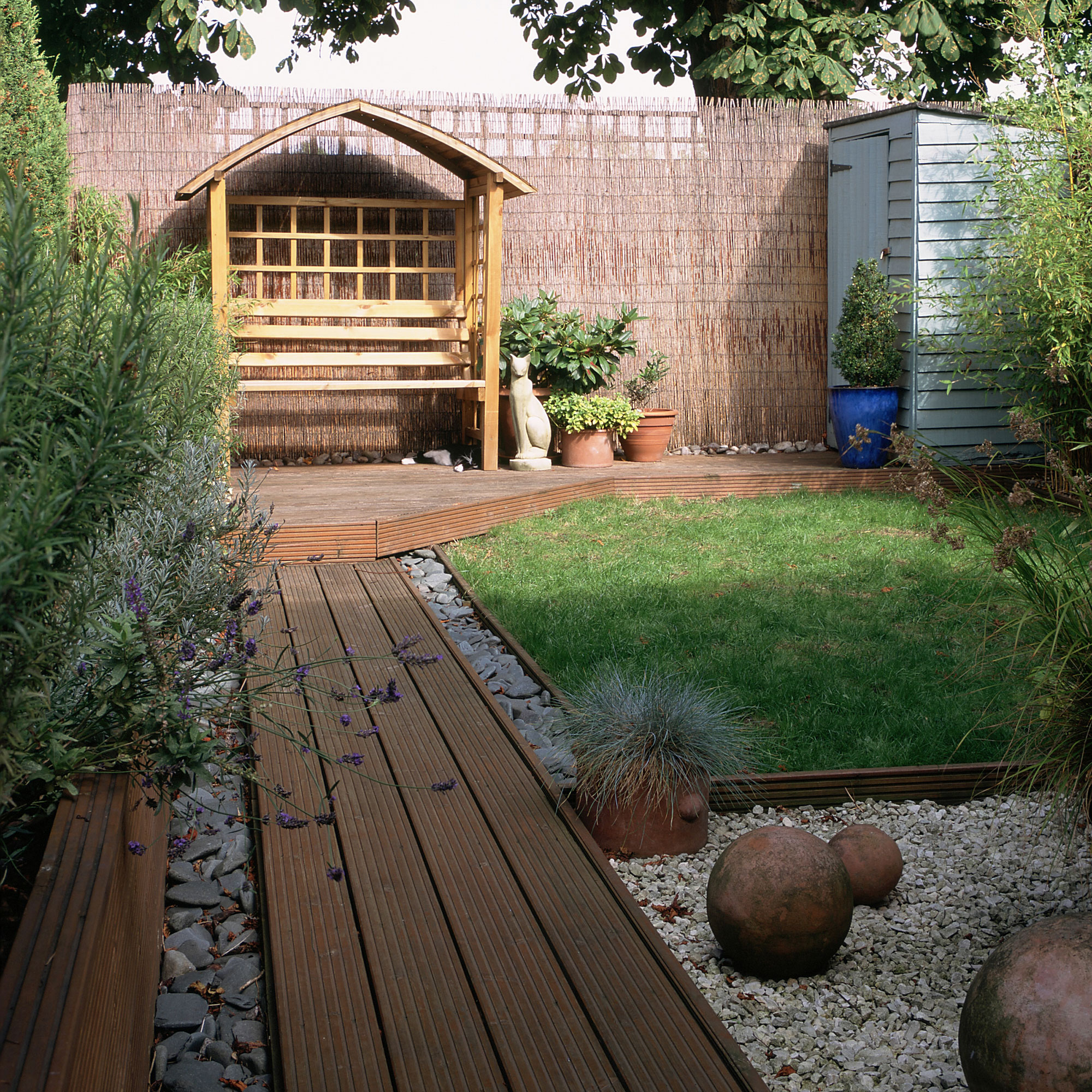
Choose the longest boards on offer to created a pathway which seems to stretch on forever. Your eye will be lead along the boards, tricking the eye and making your garden seem much longer than it actually is.
11. Design a platform for a garden bar
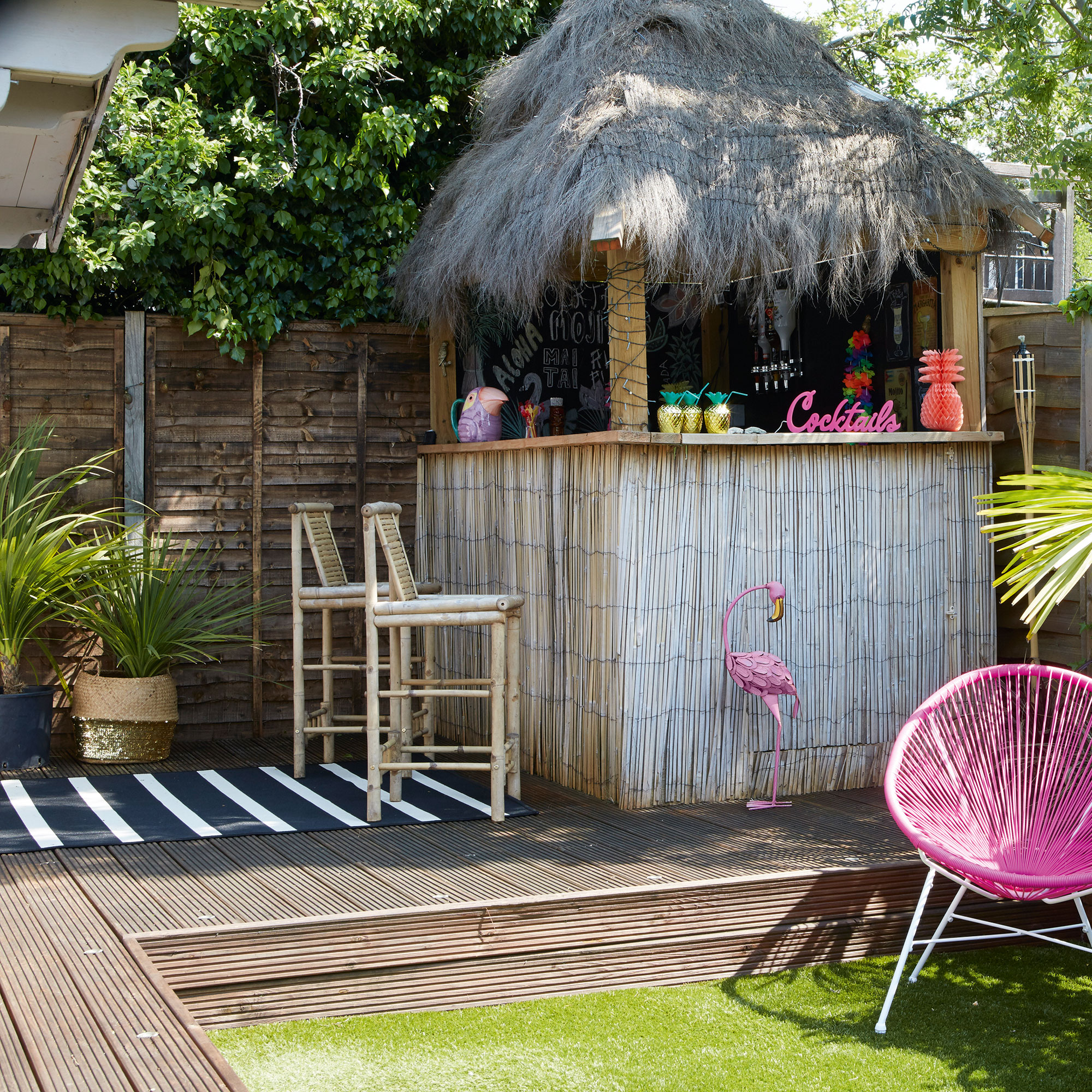
Composite decking ideas are great for entertaining spaces lie outdoor kitchens and - top of our wishlist - bars. Just make sure you treat it right.
'Keep an eye on any gathering puddles or standing water as these will quickly cause mould and mildew across the surface,' advises Chris from Wickes. 'When installing, try to keep at least 6 inches of space between the patio and decking so there is enough airflow (this will also reduce mould growth). If you’d like to put down any rugs or doormats, be sure to go with something woven as this will breathe better and not cause damage to the composite.'
'Lastly, with the incoming summer garden drinks makes sure if there are any spillages they are cleaned up right away to prevent stains and sticky patches.'
12. Alternate with stones for texture
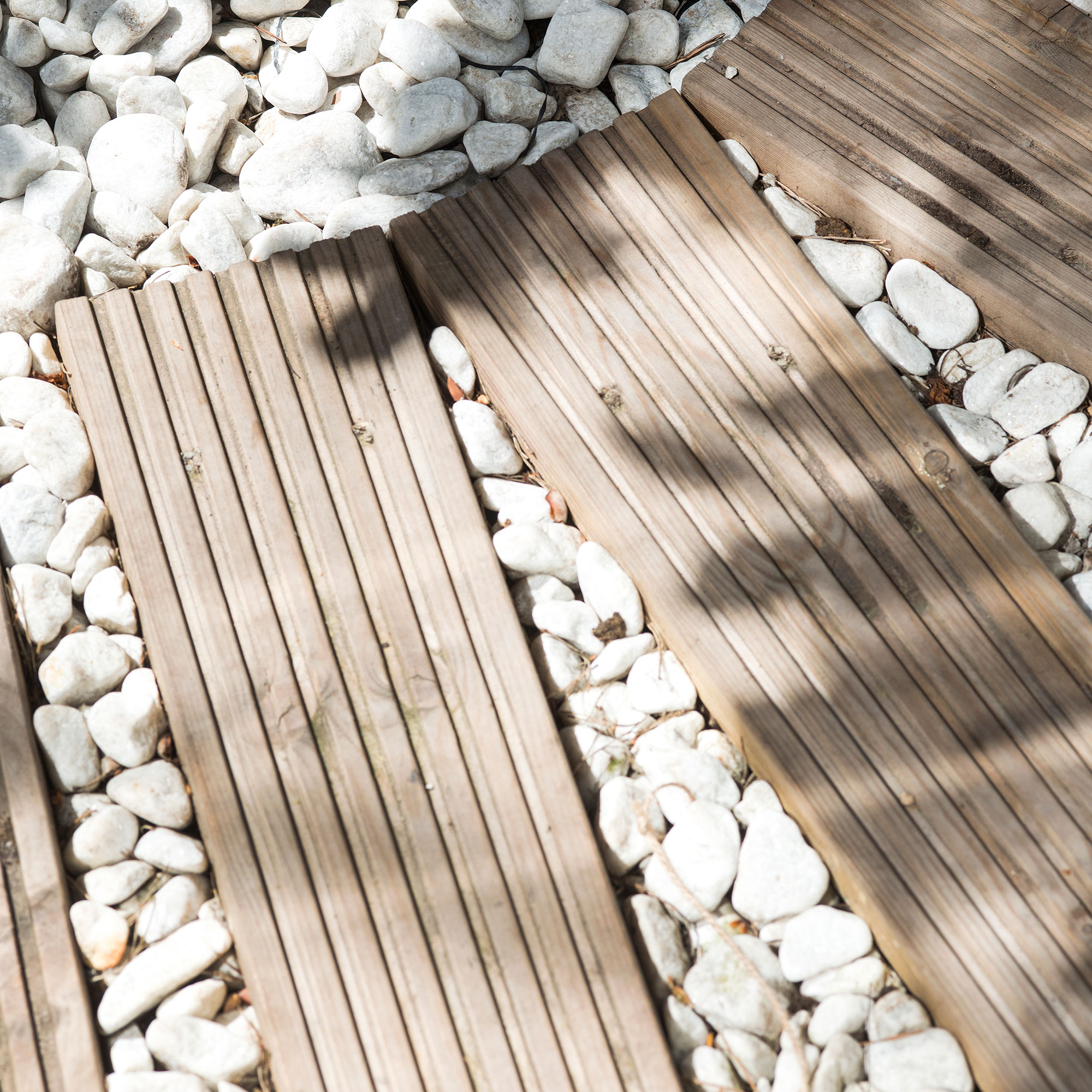
Individual boards of decking make for cool, deconstructed pathways. Alternate the boards with pretty pebbles, stones or gravel for interest and colour.
Is composite decking really worth it?
As with any addition or change to your home and garden, whether it's worth it or not is largely based on your personal preferences. That said, if decking suits your needs and aesthetics, then composite is likely to be a good choice.
'When choosing your decking, you will need to consider how it will aesthetically match with your existing exterior,' agrees Nick Whiley, Project Director, Trekker Global. 'You will also need to consider how much time you think you can allocate in looking after and maintaining your decking. If you have less time for the care and maintenance of decking, then composite decking is the right option for you.'
Indeed, composite decking is likely to make your life easier than timber in the long run. 'Many deck owners don’t mind the occasional maintenance, some that have timber decking soon wish they’d made composite their first choice,' notes Karl Harrison, landscaper and Trex Composite Decking expert. 'Replacing your timber decking with composite does make sense if you add the time and cost of maintenance of timber. If you do change your decking for composite you should look forward too many years of relatively maintenance free use.’
What are the problems with composite decking?
'There are very few disadvantages to composite decking,' says Karl. 'One of the only downsides is that it can come at a much higher price, however they have more longevity and significantly fewer maintenance costs.'
'The only real area that composites don’t compare favourably with timber, is in the initial purchase price,' agrees Lee from Dura Composites. 'Composite decking is typically more expensive, because it’s highly engineered, however when the long lifespan is taken into account, alongside the many other benefits, many feel it’s worth the investment. Of course, it’s an individual choice and it all depends on your budget and priorities. Good quality composite decking boards will cost in the region of £50 to £90 per square metre and are a sound long term investment if you choose the right brand. However, as well as the decking boards, you should also account for the foundation, subframe, railings, and any additional decking accessories.
'A small to medium-sized deck can take anywhere up to 2 days to install and requires only basic DIY tools,' adds Lee. 'So, if you prefer, you can save on labour costs and build your deck yourself, following your chosen manufacturer’s DIY installation guides.'
Does composite decking get hot to walk on?
'One criticism sometimes levelled against composite decking is that it gets hot,' notes Lee from Dura Composites. 'In truth, all surfaces that are exposed to direct sunlight all day will be warm to walk on with bare feet, but the amount of heat retained can be greatly affected by the colour. Darker colours will retain more heat than lighter colours, so if you’ve got a south facing garden and live somewhere with long, hot summers, then you may want to factor this in when selecting your colour.'
'All decking will fade a little bit initially as its UV inhibitors work to stabilise the deck colour, but if you like the colour of the sample you chose, you’ll want to make sure any fading is kept to a minimum,' continues Lee. 'The effects of sunlight are much more forgiving on composite decking than a wood deck - which will always fade to a silvery dull grey over because one of its main components, cellulose, automatically oxidises in sunlight, leading to surface bleaching.'
Is composite decking slippery when wet?
'Leading brands of composite decking have slip test data available on their websites. not to say that wet decking is slippery when wet, most surfaces are slippery when wet when compared to a dry surface,' advises landscaper Karl Harrison.
'Grooved decking performs worse in the wet, this is due to the reduced surface area. This provides less traction and therefore its performance is reduced when compared to a composite surface. The best tip to reduce the slippery surface is to keep leaves off the surface and occasionally wash with a hose and a squeegee.'
'Composite decking is less susceptible to algae growth and can be more slip resistant than timber when wet,' adds Caroline Birdsall, Marketing Director, Millboard. 'For this reason it is often a popular choice in public areas where there is heavy footfall and greater risk of slips and trips. However, composite decking varies enormously from manufacturer to manufacturer. If slip resistance is important to you, ask the manufacturer for information on their slip rating.'

Thea Babington-Stitt is the Managing Editor for Ideal Home. Thea has been working across some of the UK’s leading interiors titles since 2016.
She started working on these magazines and websites after graduating from City University London with a Masters in Magazine Journalism. Before moving to Ideal Home, Thea was News and Features Editor at Homes & Gardens, LivingEtc and Country Homes & Interiors. In addition to her role at Ideal Home, Thea is studying for a diploma in interior design with The Interior Design Institute.
-
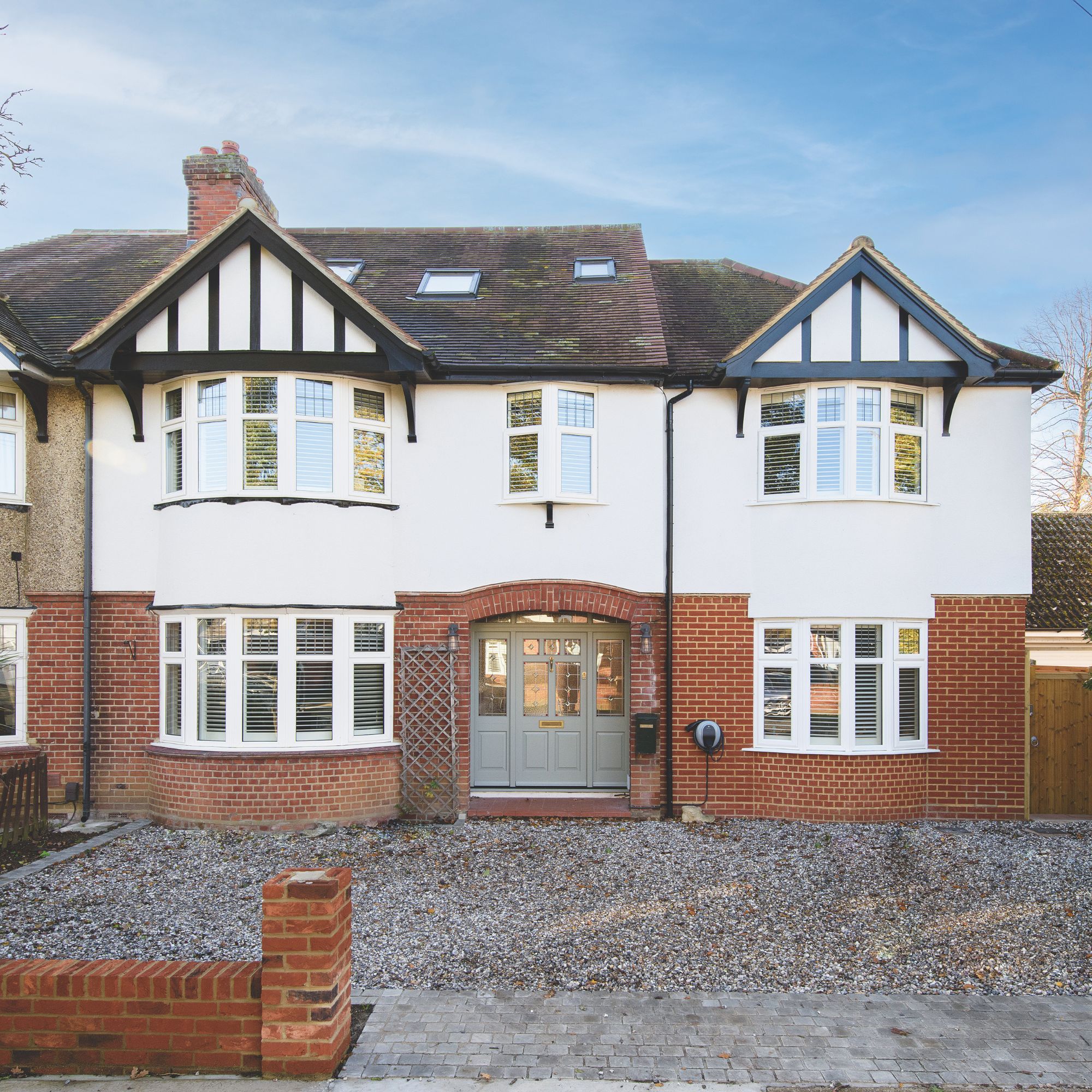 Who is responsible for repairing a party wall?
Who is responsible for repairing a party wall?How to find out who should be organising and paying for the work
By Natasha Brinsmead
-
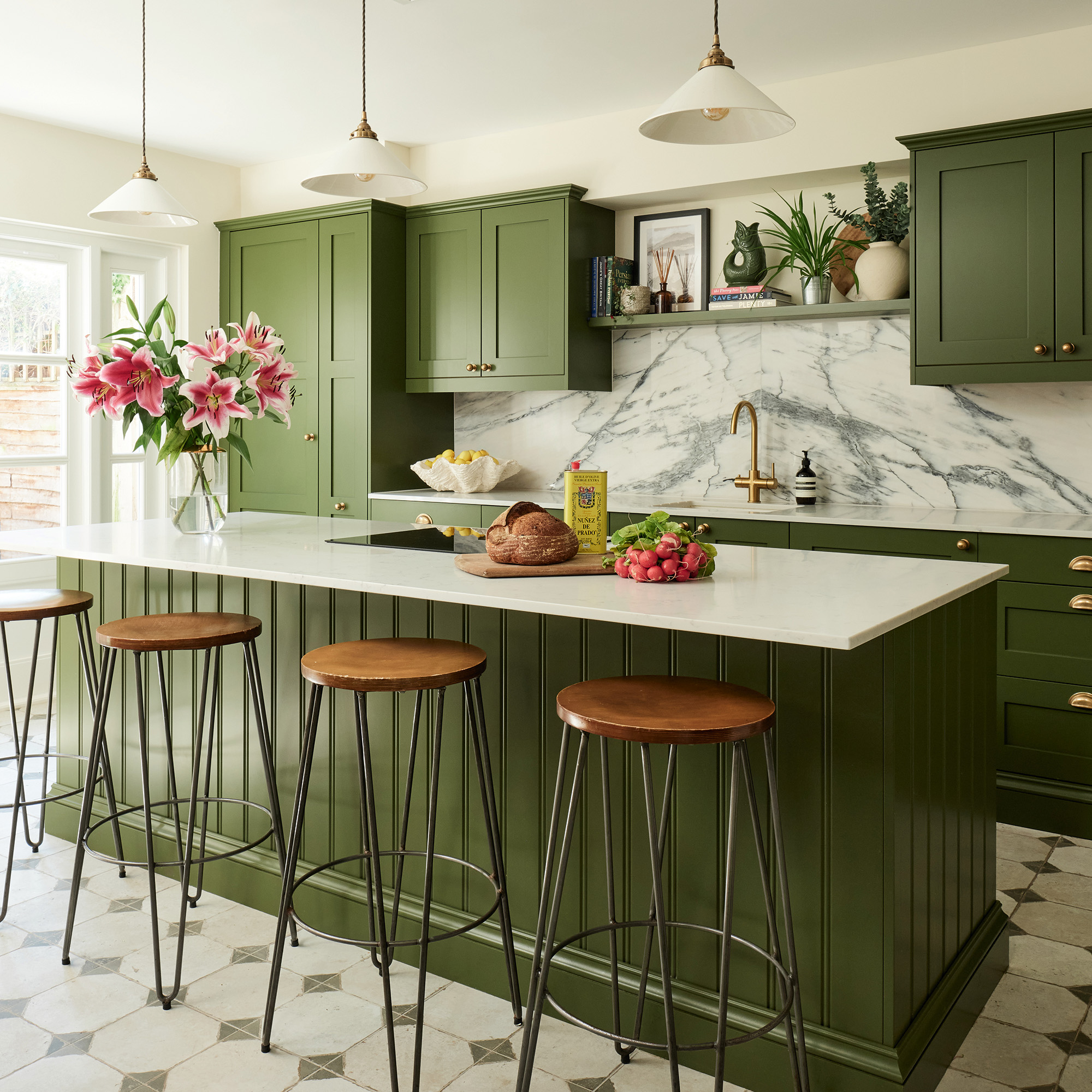 Overcoming limited space and doing away with an awkward layout, this couple created a family kitchen filled with elegant touches
Overcoming limited space and doing away with an awkward layout, this couple created a family kitchen filled with elegant touchesThe symmetrical layout is full of luxurious details
By Holly Reaney
-
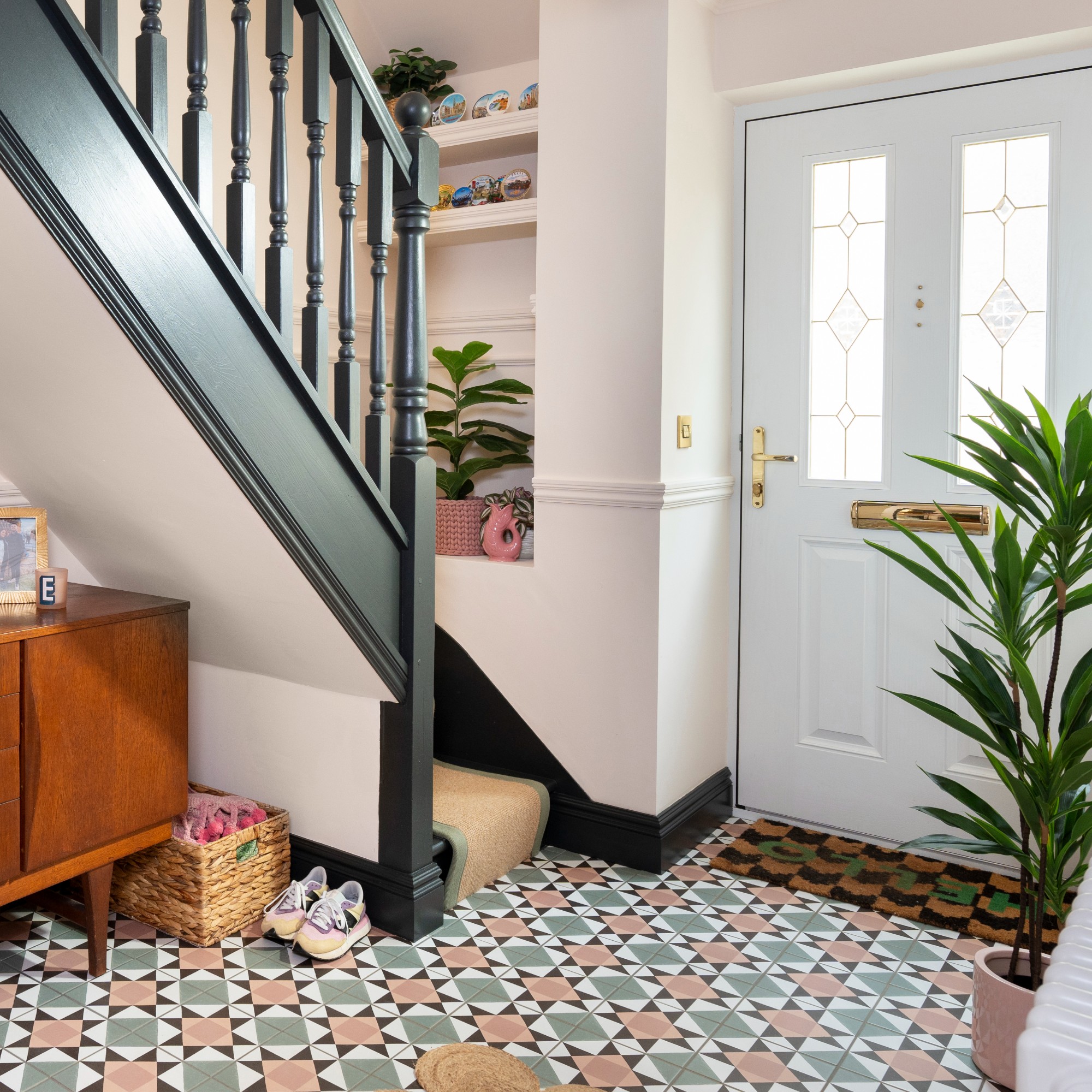 Should your doormat go inside or outside the front door? According to experts I've been getting it wrong for years
Should your doormat go inside or outside the front door? According to experts I've been getting it wrong for yearsExperts reveal the best spot for a a doormat based on your preferences and where you live
By Sara Hesikova